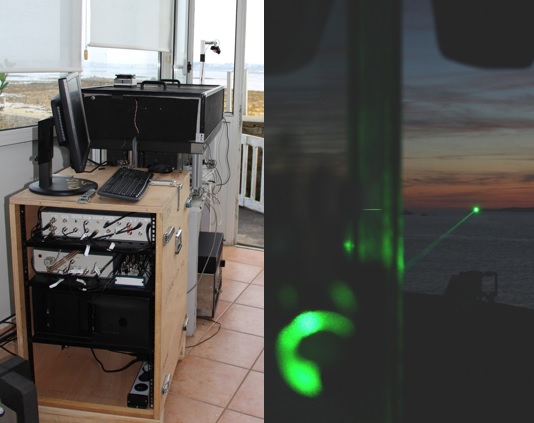Atmospheric chemistry
Oxidative Capacity at Polar Regions
This project started in 2009 with the development of a femtosecond instrument based of mode-lock cavity-enhanced absorption spectroscopy (ML-CEAS) for detecting high reactive halogen oxide radicals (IO and BrO). Thanks to the broadband feature, the instrument can also measure NO2 and formaldehyde, and it has been employed in the Austral Summer 2011/12 for study the oxidative capacity of the atmosphere at Dumont D’Urville station, in the East coast of Antarctica and in winter/springtime in 2013 in the Weddell Sea to understand the role of halogenated species on the West coast at this time of the year.
In the frame of the LEFE Project “REACT” we are currently working in the conversion of the instrument for long-path DOAS measurements.

Two Incoherent Braodband instruments (IBB-CEAS) working at 445 nm have been developed by the Engineer C. Blouzon for sub-ppb detection of NO2, NO (indirectly) and also IO, CHOCHO. The instruments have usefully been deployed by the PhD student A. Barbero in Concordia station during the Austral Summer of 2018/19 and 2019/2020, and by Joel Savarino in the summer of 2021/22.
Thanks to the financial support of Grenoble INP, the instruments will be equipped with QE Pro spectrometer from Ocean Insight, which would allow us to further improve the sensitivity of the measurements.

People involved and principal collaborators :
Joel Savarino (IGE), Data interpretation
Daniele Romanini, Development LP-DOAS
Guillaume Mejean, Development LP-DOAS
Hélène Fleurbaey, Development LP-DOAS
Markus Frey (BAS, UK), Data interpretation
Aurelien Dommergue (IGE), Data interpretation
Olivier Magand (IGE), Field deployments
 La fédération
La fédération Intranet
Intranet









